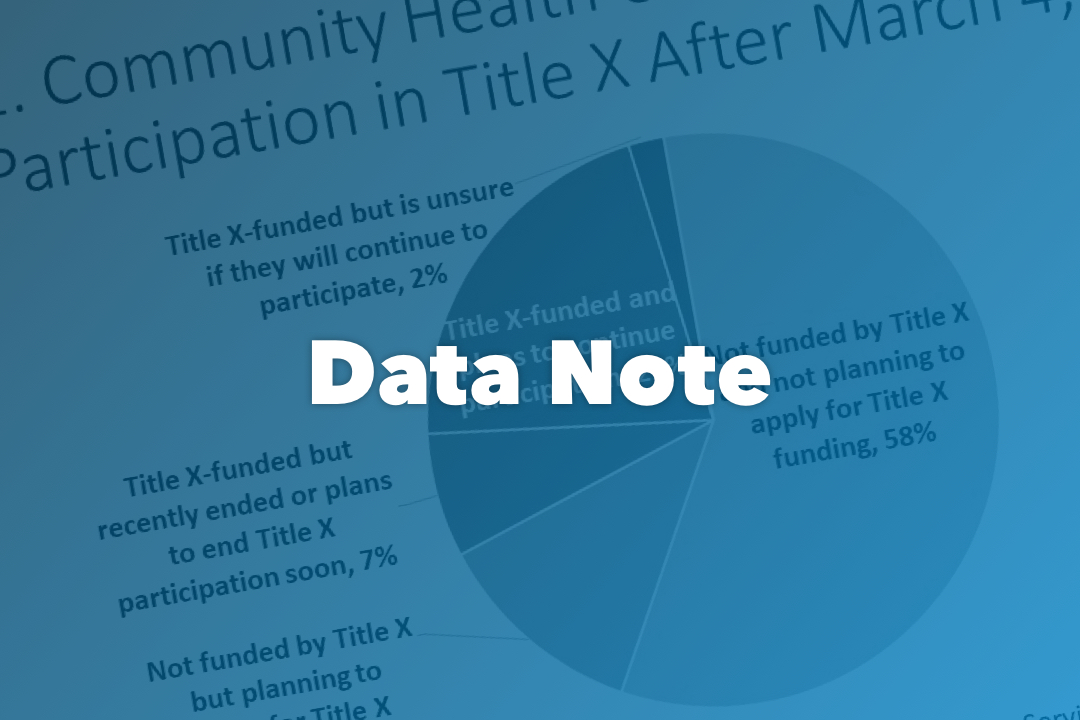Data Note
March 2025
Marsha Regenstein, Sara Rosenbaum, Feygele Jacobs, Kristine Namhee Kwon, Leticia Nketiah
Community health centers, which celebrate their 60th anniversary in 2025, are more than a source of high-quality primary health care for medically underserved communities nationwide. Building on the early principles of community-oriented primary care, they have evolved into robust community health hubs, combining direct clinical care with broader health investments, guided by continual assessment of local needs. This overview highlights where health centers are located, whom they serve, how they support the health and well-being of their patients and the communities they serve, and their successful track record in advancing health for millions of people across the country.
Health centers care for more than 31 million people annually
Blending clinical care and broader health promotion is one of the most unique and significant distinguishing features of community health centers, and helps explain their growth from a small demonstration program into a national network that served over 31 million people in 2023, a third of whom resided in rural communities.
Community health centers serve…
One in 10 people nationally
One in 6 rural residents
One in 8 children
One in 8 women of reproductive age
One in 6 pregnant women
Community health centers serve all patients regardless of their ability to pay, in part through uncompensated care and by offering sliding fee scales. In 2023, health centers provided care for over 9 million children, nearly 18.5 million adults ages 18-64, and 3.7 million older adults, whose ranks have grown steadily over the last decade. Eleven percent of health center patients were age 65 or older. Nine in 10 patients had incomes below twice poverty.
Because of whom they serve and where they are located – in under-resourced communities that experience primary care shortages – the nation’s non-profit community health centers rely primarily on public insurance and grants. Medicaid covers more than half of all health center patients and accounts for the largest share of their revenue, followed by a combination of public (Medicare) and private health insurance such as affordable health coverage purchased by low-income families.
Health centers are located in communities with primary care shortages, providing local residents a vital lifeline to care
The nation’s health centers operate more than 15,500 service sites in rural, urban and frontier communities, and offer a broad set of primary and preventive health services, along a continuum from prenatal care and birth through old age, that extend far beyond those generally seen in any one private physician's practice. Collocating a comprehensive range of services supports a coordinated, whole-person care model, and is a common-sense approach to improving access for people who must travel long distances or face other barriers.
Health centers provide essential services generally not offered by other primary care practices
All community health centers provide comprehensive primary care, and nearly all (97.6%) provide mental health services. If not for the presence of a health center, many critically important services would be out of reach to residents of the community.
Dental and vision care, for example, are particularly difficult to access in many communities across the country. Over the past decade, health centers have responded to this need by expanding their oral health and vision care capacity. In 2023, 86 percent of the nation’s health centers provided dental services, and about one-third provided vision care.
Beyond direct clinical services, health centers help people access the care they need by providing services such as transportation, case management, and interpretation.
Health centers provide high-quality and efficient care, often at lower costs than comparable care in their communities
Health centers combine their service mission – providing high-quality primary and preventive care services in otherwise underserved communities – with a governance model that places patients first. Health centers require that a majority of governing board members be current or former patients. This unique arrangement helps ensure that the health center is responsive to local community needs.
Health centers elevate the health of their communities and have been shown to:
Reduce the overall cost of medical care
Provide care that meets or exceeds key quality metrics
Provide care to people with chronic conditions
Provide important employment opportunities for local community residents
Health centers face challenges maintaining their critical role as health hubs in under-resourced communities
Health centers need adequate, stable sources of funding to provide customized high-quality services to their communities and innovate within a dynamic health care environment. Their success depends on a dedicated and well-trained workforce who deliver first-rate primary care and help patients navigate specialty and hospital care. Health center staffing is particularly challenging, especially in rural communities which experience widespread workforce shortages. Health centers have high demand for services – and especially for those services that are not available from other local health care providers. Securing and maintaining adequate revenues is essential to ensuring that health centers are adequately staffed and can continue their critical role serving thousands of communities and tens of millions of patients. Medicaid is the most important revenue source, as are federal grants which provide the means by which health centers care for uninsured patients and provide crucial services that many insurers do not cover. Health centers have a storied legacy, but their future is at risk. Cuts to Medicaid or federal grants will have devastating consequences to health center patients and the communities in which they live.
- Sources
HRSA Uniform Data System (UDS), 2023
The United States Census Bureau. Quick Facts. 2024. https://www.census.gov/
quickfacts/fact/table/US/ AGE775223#AGE775223 National Vital Statistics Reports, Volume 73, Number 2 April 4, 2024 U.S. DEPARTMENT OF HEALTH AND HUMAN SERVICES Centers for Disease Control and Prevention. Births: Final Data for 2022. https://www.cdc.gov/nchs/data/nvsr/nvsr73/nvsr73-02.pdf



